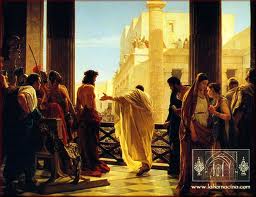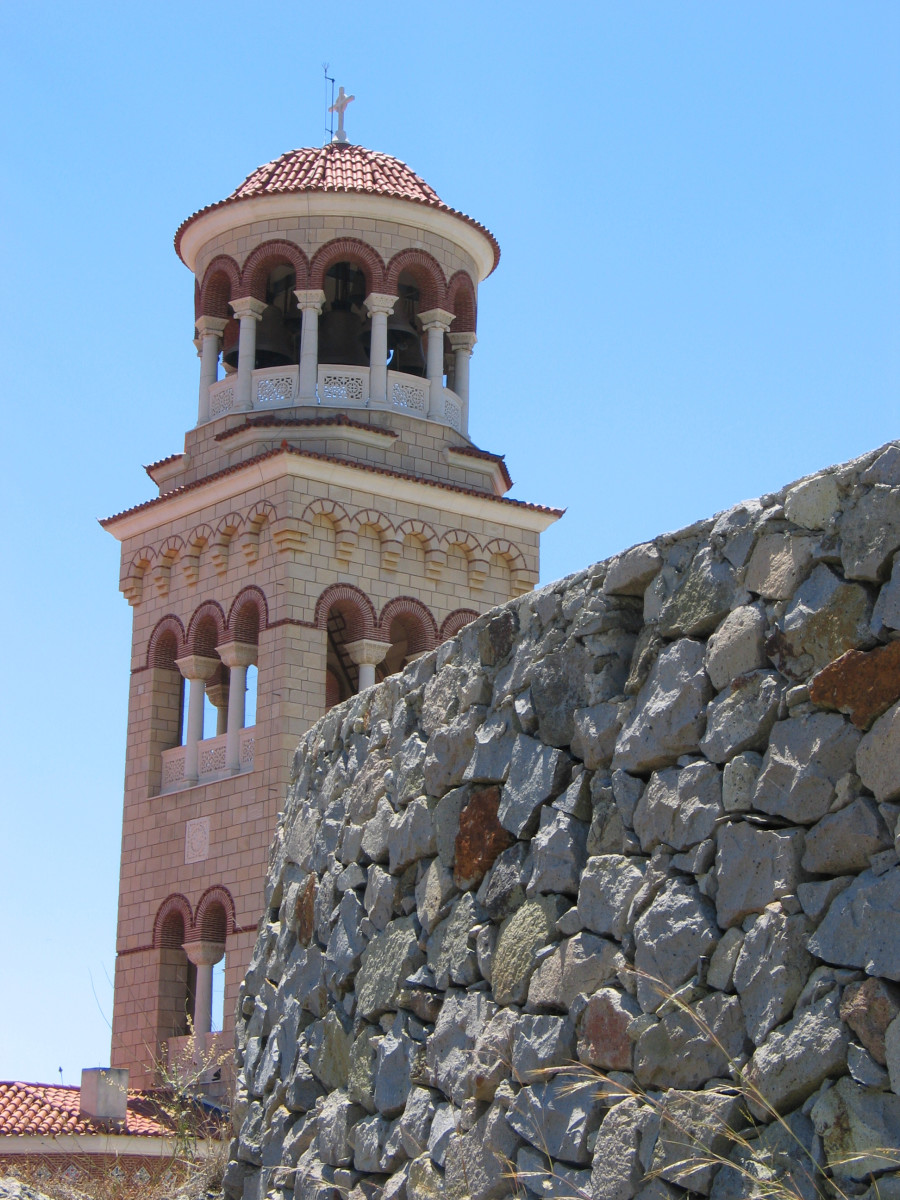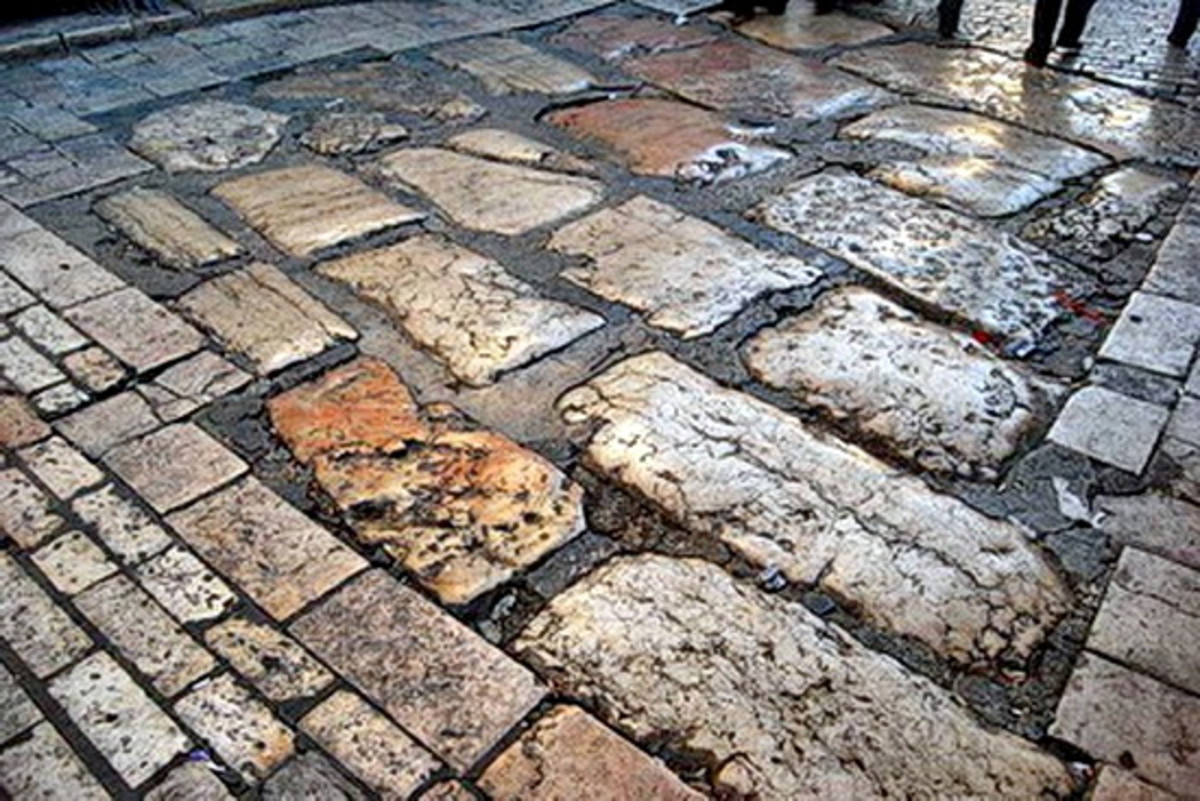Stations of Redemption

Great things do not happen by accident, people plan for it. For thousands of years, God had purposed in His heart to send His Son, Who would be called Jesus, the Anointed One, to save His people from the punishment of sin. This singular divine act of grace was revealed to God’s prophets before the birth of Jesus. The reason is that the Lord GOD will do nothing, but He reveals His secret unto His servants the prophets; so they can bear witness to the truth and testify to God’s glory when the prophecy is fulfilled.
From Moses, Isaiah and the rest, down to Zechariah and his contemporaries, all prophesied clearly about the birth of Jesus, to His death and resurrection. As a matter of fact, nothing about Jesus was accidental; the laws and the prophets were fulfilled in Him with time and places accurately designed into these fulfillments. For example, it was the Jewish tradition in those days for a male child to be adopted by his father (away from his mother) at age twelve, into the father’s business. At age twelve, Jesus was found in the temple and His answer greatly surprised Joseph and Mary that knew this tradition of adoption very well. Hear what Jesus said:
‘And he said unto them, how is it that ye sought me? Wist ye not that I must be about my Father's business?’ – Luke 2:49 (KJV)
‘Carpentry: Yes, carpentry is your father’s business’ this must have been the thought on Joseph and Mary’s minds. However, the prophetic time and place was twelve years, which was the number of foundation, and the temple which was God’s business. Therefore, by Jesus’ answer to His earthly parents, He simply meant that He is (was) the son of God; and His adoption by God has just started which lasted eighteen years, as penned down by the writer of Hebrews. The lesson here is that prophetically, Jesus at the right time was at the right place.
It is amazing to know that everyday Jesus went about fulfilling God’s agenda for the day. Either pleasant or unpleasant; Jesus had no agenda of His own, except to do the will of His Father. Every blessed day of Jesus’ ministry on earth, God sets His agenda for Him. Hear how Jesus Himself put it:
‘ Then answered Jesus and said unto them, Verily, verily, I say unto you, The Son can do nothing of himself, but what he seeth the Father do: for what things soever he doeth, these also doeth the Son likewise.’ – John 5:19
Let it be known to all that the entire God’s agenda for Jesus was not pleasant altogether; some of those experiences were so terrible, yet Jesus was obediently ready and willing to do the very will of His Father (God). One of such unpleasant occasion is recorded thus:
‘Then saith he unto them, my soul is exceeding sorrowful, even unto death: tarry ye here, and watch with me. And he went a little farther, and fell on his face, and prayed, saying, O my Father, if it be possible, let this cup pass from me: nevertheless not as I will, but as thou wilt.’ – Matthew 26:38 - 39
Like Joseph, Jesus’ cup was also running over with every horrible and terrible gall of our sins with which He was made to drink by God Himself. Jesus would only be the Savior of the world after He had swallowed up death in victory, of which it would not be possible except He drinks from this cup of sin and sins of the world. How can we have a resurrected Jesus, if He was not buried? How can He be buried, if He had not died? How can He die, if He was not crucified? How can He be crucified, if He was not standing as guilt? How can Jesus be guilty of sins, if He had not fully drunk every drop of the gall of sins that was in the cup voluntarily?
God the Father was not cruel or wicked to Jesus, His only begotten Son, but in His manifold wisdom was making a divine exchange; so that He that knows no sin might become sin for us, and we can now become God’s righteousness in Christ Jesus. This manifold wisdom of God can better be appreciated in Jesus’ stop – over at what I called the four G – Stations, the first of which is:
Gethsemane: The gospel according to Matthew and Luke recorded the event that took place at a garden called by the name of Gethsemane which itself was at the Mount of Olive. The English meaning of this garden is ‘Plentiful Vale’, which truly was a ‘valley’ or a ‘depression’ within the Mount Olive where olive oil is being pressed. According to Matthew, it was at this ‘valley’ or ‘depression’ that Jesus’ soul (emotion, will and intellect) was exceedingly sorrowful and even unto death. It was at Gethsemane that Jesus saw death face to face! The event that took place at this garden was better described by Luke, who had a medical insight into Jesus’ encounter with death, especially in Jesus’ physical body.
Read their reports at the event at Gethsemane:
Then saith he unto them, my soul is exceeding sorrowful, even unto death (Matthew 26:38). And being in an agony he prayed more earnestly: and his sweat was as it were great drops of blood falling down to the ground (Luke 22:44). Unlike Enoch and Elijah, that cheated death by walking away from it, Jesus was the first person ever, to look at death in the face, walked through it and walked out of it in victory! Hallelujah!
Before every victory, there was a battle. The garden of Gethsemane suddenly became a battlefield for a mother of all battles, between Jesus and death. In history, no man has ever confronted death like this before. It was not an easy encounter even for Jesus, for He was fully man like you and I at that garden. Terrible fear came upon Him at the instant, His soul was very sorrowful. Within seconds, He was profusely sweating while praying. His Spirit was intact and in touch with the Father, but His soul and body was in total disarray and shattered. For Jesus, the crucifixion begins here at Gethsemane, but only in the mind. It was so horrifyingly terrible at this garden that God had to send an angel from heaven to strengthened Him (Luke 22:43).
Luke, being medical personnel was the only gospel writer that recorded that Jesus’ sweat was like drop of blood. This phenomenon is known as Hematidrosis in medicine. It is also known as the ‘sweat blood’. It has also been medically documented that some people under a stressful and emotional tumor shed tears mixed with blood. Howbeit, Hematidrosis is produced in exceptional condition; to result in physical weakness accompany by a violent moral subsidence, caused by deep emotion for a great fear is necessary. Such extreme stress produces the breaking of every fine capillary that are under the sweat glands, thereby blood mixes with sweat which then flow all over the body to the earth.
The bible did not tell us exactly how long this terrible experience was with Jesus, but after the experience, He left the garden (arrested by mobs), and He was calm before Pilate. The reason was that Jesus had won the battle at Gethsemane in the mind, before He was brought to Pilate.
The wisdom of God in this was that Jesus must be at Gethsemane, the garden of ‘depression’, the ‘valley’ of life, so that Jesus through death might be the pathfinder of life to those who are held in bondage by the fear of death.
‘ Forasmuch then as the children are partakers of flesh and blood, he also himself likewise took part of the same; that through death he might destroy him that had the power of death, that is, the devil; And deliver them who through fear of death were all their lifetime subject to bondage.’ – Hebrews 2:14 - 15
The same reason He is called the ‘Bishop of our souls’. Gethsemane was a must for Jesus if He will be the Lord of all. Thank God, Jesus went to Gethsemane, He saw death, and He conquered death in His mind first, ever before He got to the next G – Station! Praise God!!
Gabbatha: This was a platform in front of the praetorium or governor’s palace in Jerusalem, where Pilate sat in judgment. The word means ‘elevation’. The Greek called it Lithostrotos or the pavement of stones. The Syrian version renders it as the room Gazith, in which the Sanhedrin sat in the temple when they tried capital causes. It was so called because it was paved with smooth, square hewn stones. Half of it was holy, and half of it was common; and it has two doors, one for the part that was holy and the other for the part that was common; and in the half that was common the Sanhedrin sat, so that into this part of it, Pilate, though a gentile might enter. The word was Aramaic in origin, meaning stone pavement. It properly means the tessellated or mosaic pavement where judgment – seat stood, but which was extended to the place itself in front of Pilate’s praetorium, where that pavement was laid. Gabbatha was located at Jerusalem.
In the scheme of redemption, it was important for Jesus Christ to stop over at Gabbatha, having left Gethsemane. We should bear in mind that on three different times, Pilate said to the Jews that He found no fault in Jesus. The bible has the records thus:
‘Pilate saith unto him, what is truth? And when he had said this, he went out again unto the Jews, and saith unto them, I find in him no fault at all. ‘– John 18:38
Pilate therefore went forth again, and saith unto them, Behold, I bring him forth to you, that ye may know that I find no fault in him. – John 19:4
When the chief priests therefore and officers saw him, they cried out, saying, crucify him, crucify him. Pilate saith unto them, Take ye him, and crucify him: for I find no fault in him – John 19:6
Before Jesus was brought to Pilate, He was first taken to Herod who could not attach any sin or wrongdoing to Jesus; therefore he sent Jesus to Pilate who also could not found any fault in Jesus. The wisdom of God in this was that both Herod which represented the ‘Tradition’ and Pilate that stood for the ‘Law’ saw no fault in Jesus Christ, Who was the Lamb without blemish. In a simple language, Jesus was not in any way guilty of their Tradition and was blameless when it comes to Laws.
There was a turn of event at the 13th verse of John chapter 19. It was recorded thus:
‘When Pilate therefore heard that saying, he brought Jesus forth, and sat down in the judgment seat in a place that is called the Pavement, but in the Hebrew, Gabbatha’
Before now, Pilate had been going back and forth, between the Jews that would not enter the judgment hall (they were preparing for the Passover and sitting with Pilate in the same place will defile them – so they believed), and Jesus that was in the same hall with Pilate. So when they threatened to report Pilate to Emperor Caesar, he had a second thought and ordered Jesus to be brought out to Gabbatha. Now, any time Pilate sits on that Stone Pavement, which was elevated outside the judgment hall, whoever stands before him is guilty. This scenario is a type and a shadow of God’s White Throne Judgment where everyone standing before God is guilty (Revelation 20:12).
What was innocent Jesus doing standing at the place of condemnation? The same divine exchange was taking place then at Gabbatha. Jesus stood there instead of you and I; our iniquities was laid upon Him and He was led away like a sheep to be slaughtered.
While Pilate was trying to secure his job, God was carrying out His counsel at Gabbatha. Through the searchlight of heaven, we can now see again the manifold wisdom of God in allowing Pilate to compromise; having declared Jesus innocent three consecutive times. Here is the wisdom: Pilate being a gentile represented all the gentiles. His agreement with the Jews in sentencing Jesus to death makes the gentiles also to be guilty of Jesus’ death. Therefore, after His resurrection, when Jesus brought forgiveness to the Jews, the gentiles also benefited from Jesus’ forgiveness of sin! What wisdom, what a grace from God!
With an uncommon ground but with one consent, Pilate, with the Jews backing sentenced Jesus Christ to death by crucifixion. Therefore at Gabbatha Jesus was given 39 lashes of whipcord that has pickles of bones attached to it. With His skin ripped opened by the lashes, Jesus then carried His cross from Gabbatha all the way to the next significantly redemptive station.
Golgotha: This word literarily means the place of skulls. Golgotha was a dreadful place located outside the city of Jerusalem. Here condemned criminals were executed without proper burial for their body; therefore, with time their carcasses littered the place with their skulls being prominent the most. Other people say the actual field where these executions took place has a shape like that of a human skull. Be it at it may, Golgotha means death. After the terrible 39 lashes He received, Jesus was already bleeding and losing blood seriously. The battle ground was moved from the mind to the body. The shadow of Golgotha was seen at Leviticus:
‘For the life of the flesh is in the blood: and I have given it to you upon the altar to make atonement for your souls: for it is the blood that maketh atonement for the soul.’
– Leviticus 17:11
Now at Golgotha, by the wisdom of God, Jesus Christ became both the High Priest to offer the sacrifice, and the Lamb (without blemish) to be sacrificed at one moment. The description of Jesus crucifixion was so disheartening that only the strong in heart can bear it. The legs were tucked in a bit before nailing it to the wood; the hands were stretched and nailed to the cross. In this position, mere breathing was difficult, and any time He tried to stretch His back, the nail hinders at the feet.
Nobody has idea how painful it was for Jesus being nailed on the cross for good six hours! However, at the end of it all, Jesus said, ‘It is finished’. These very important words were recorded only by John the beloved Disciple. John wrote thus:
‘After this, Jesus knowing that all things were now accomplished, that the scripture might be fulfilled, saith, I thirst. Now there was set a vessel full of vinegar: and they filled a sponge with vinegar, and put it upon hyssop, and put it to his mouth. When Jesus therefore had received the vinegar, he said, it is finished: and he bowed his head, and gave up the ghost.’– John 19:28 - 30
It is finished – means Tetelestai in Greek language. The audience of John’s gospel was educated and highly intelligent people which had a ground understanding of Greek language. This word tetelestai was also written in business documents or receipts in New Testament times to show or to indicate that a bill had been paid in full. This language was also identified with Artists or Painters that has completed a masterpiece which needs nothing to be added. At Golgotha, Jesus paid fully our bill of redemption with His life. There is nothing left unpaid for or left undone! At Golgotha, the letters of ‘evil’ was re – arranged by Jesus Christ, to read ‘live’!
Adam by disobedience destroyed the power of life. And Jesus by obedience destroyed the power of death. For three days, He went and preached to the spirits in prison (1 Peter 3:19). After which He came out from the death, because it was impossible for death to hold Him:
‘Whom God hath raised up, having loosed the pains of death: because it was not possible that he should be holden of it’ – Acts 2:24
After His resurrection, one would think that Jesus will go immediately unto His Father. Not so fast, for He must appear at the last G – Station after Golgotha.
Galilee: This was where Jesus’ Ministries’ headquarters was located. Most of Jesus’ disciples were Galileans. The name Galilee comes from a Greek variation of the Hebrew name Galil, and that name is identical to one adjective and one noun (galil) that were derived from the verb (galal), meaning to roll. From NOBSE Study Bible, Galilee has a list of meaning, among which are ‘Rolling’, ‘Revolving’ and other sources has it has ‘District’, ‘Circuit’, ‘Wheel’ or ‘Revolution’
Galilee is paramount to the work of redemption. Galilee was the very place where Jesus’ fame started spreading (According to Luke chapter 4), the same place where Jesus did many miracles and many people believed in Him. In the natural settings; after Jesus’ crucifixion, it was only natural for His disciples to return back to Galilee from Jerusalem and back to their trade of fishing. The grassroots of Jesus’ disciples and followers were from this ancient region. Therefore, one can see and appreciate the wisdom of God in permitting Jesus to appear in Galilee for Him to be seen by about five hundred people at once.
‘And the angel answered and said unto the women, Fear not ye: for I know that ye seek Jesus, which was crucified. He is not here: for he is risen, as he said. Come; see the place where the Lord lay. And go quickly, and tell his disciples that he is risen from the dead; and, behold, he goeth before you into Galilee; there shall ye see him: lo, I have told you’ – Matthew 28:5 - 7
‘And that he was seen of Cephas, then of the twelve: After that, he was seen of above five hundred brethren at once; of whom the greater part remain unto this present, but some are fallen asleep.’ – 1 Corinthians 15:5 - 6
The fourth and the last G – Station is directly related to our testimony today that Jesus is alive. If our Lord and Savior, Jesus Christ did not appear at Galilee and was seen by numerous witnesses, our testimony today might be feeble and shaky, but glory be to God for His wisdom in making Galilee a place of many witnesses that saw Jesus Christ live after the crucifixion. Galilee answered to its name in Christianity in that it was there that the truth started a revolution against the lie which said that Jesus’ disciples carried His body away from the tomb. Apostle Paul said that if Jesus is not alive, that is raised from the death, then we are the most miserable among men. The truth of Jesus being alive was rolled out from Galilee to the end of the earth. No power can keep people quiet of the truth that Jesus is alive!
These faithful witnesses at Galilee passed the truth unto us and Holy Spirit testifies to it with miracles, signs and wonders that Jesus Christ is alive and He is the Lord and the King of all!
Praise God forever!
Preparing the Bride,
Segun Tewogbola








